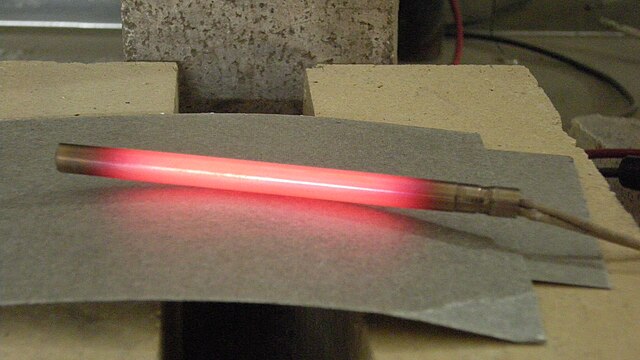In electronics, negative resistance (NR) is a property of some electrical circuits and devices in which an increase in voltage across the device's terminals results in a decrease in electric current through it.
Fluorescent lamp, a device with negative differential resistance. In operation, an increase in current through the fluorescent tube causes a drop in voltage across it. If the tube were connected directly to the power line, the falling tube voltage would cause more and more current to flow, causing it to arc flash and destroy itself. To prevent this, fluorescent tubes are connected to the power line through a ballast. The ballast adds positive impedance (AC resistance) to the circuit to counteract the negative resistance of the tube, limiting the current.
A Gunn diode, a semiconductor device with negative differential resistance used in electronic oscillators to generate microwaves
An oscillator consisting of a Gunn diode inside a cavity resonator. The negative resistance of the diode excites microwave oscillations in the cavity, which radiate through the aperture into a waveguide (not shown).
8–12 GHz microwave amplifier consisting of two cascaded tunnel diode reflection amplifiers
Electrical resistance and conductance
The electrical resistance of an object is a measure of its opposition to the flow of electric current. Its reciprocal quantity is electrical conductance, measuring the ease with which an electric current passes. Electrical resistance shares some conceptual parallels with mechanical friction. The SI unit of electrical resistance is the ohm, while electrical conductance is measured in siemens (S).
An ohmmeter
Running current through a material with resistance creates heat, in a phenomenon called Joule heating. In this picture, a cartridge heater, warmed by Joule heating, is glowing red hot.






